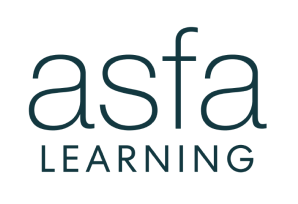Today, the Government received a report on the future of retirement income policy and no doubt anti-retirement groups will use this as an opportunity to try once again to tear down our world class system.
The usual suspects will argue that there is no need for superannuation as all low income earners end up on the full Age Pension anyway, so it doesn’t reduce budget costs.
Of course, this isn’t true. Only 2 per cent of Australians remained in the lowest income bracket for the whole 16-year period between 2001 and 2016. In addition, compulsory superannuation takes pressure off future budgets, and the Age Pension is already being substantially reduced by $7 billion per year and growing.
We currently spend just under 3 per cent of GDP on the Age Pension – that is one third of the OECD average of 8.8 per cent for government expenditure on income support for the aged. Some European countries already have four times the level of Australian expenditure.
The reality is that life on the full Age Pension is hard – it is only 67 dollars per day after all, or precisely equivalent to the poverty line according to the Australian Council of Social Service (ACOSS) and UNSW analysis. No Australian sets out to retire to a life of poverty.
Without compulsory superannuation, around 50 per cent of couples and over 70 per cent of single people would have incomes in retirement no greater than a $1,000 a year in addition to the Age Pension.
Let’s put that in perspective. The unemployment benefit—JobSeeker—at its current rate, is around 18 per cent higher for a single person and around 57 per cent for a couple than the full Age Pension.
JobSeeker payments do not provide people with a life of comfort and certainly not luxury, and the Age Pension in retirement falls even further short of both.
The anti-retirement groups also argue that young people are better off having more money in their pocket now, as they claim that superannuation is simply swallowed up in fees.
There is no doubt younger people are doing it tough. As demonstrated by those under 35 who used the COVID-19 early release provisions for their superannuation. By 12 July, over 1.4 million persons aged under 35 will have received early release payments, with many of them having made two applications.
Most Australians haven’t had a real wage rise in years. However, the Superannuation Guarantee clearly isn’t the cause of this wage stagnation, as it hasn’t increased since 2014. Also, fees are capped for low balance superannuation accounts to prevent balance erosion and assist young people to grow their retirement benefits.
The other key argument by the anti-retirement brigade is that superannuation should be used to buy your own home, however people can already make voluntary contributions to superannuation that can be used to buy a home, and the newly established First Home Loan Deposit Scheme also supports new buyers. Lack of housing affordability is driven by factors including supply, income, interest rates, immigration, state taxes, planning and infrastructure. Using compulsory super for housing would only increase prices and put housing further out of reach.
We can, and should, aim for policies that enable people to have both a home and a decent retirement.
Despite the fact that we have a retirement system with one of the lowest costs to government in the world, no doubt the proposals to increase tax on superannuation will come out of the bottom drawer in coming months as the Government considers budget repair.
However, there is a significant risk that younger generations are not just burdened with debt but also increased pension, aged care and health costs. Incentives are needed to encourage Australians to save for retirements and to ensure that, unlike in many countries, we’re not mortgaging our kids’ futures.
While there is clearly an opportunity to reform the tax settings for superannuation, the focus should be on removing outdated thresholds under which no superannuation is paid (currently $450 per month), bringing the self-employed and gig economy workers into the system, and addressing the significant inequalities faced by women in retirement.
Australians are facing the biggest economic challenge since the Great Depression and it’s imperative that we take this opportunity to reset the entire tax system, so it’s fit for purpose for the next 40 years. Now is not the time to take the easy opportunity and introduce yet another retirement tax.
Let’s instead look more broadly at:
- the mix of taxes – direct and indirect (including the GST)
- inefficient taxes on housing, such as stamp duty, and taxation distortions that directly impact on housing prices, such as negative gearing on your fifth home for example
- making sure that everyone pays their fair share of taxation – around 30 per cent of large companies currently don’t pay any income tax
- the global on-line ‘revenue pie’ and introducing a turnover tax that targets online economic activity in Australia.
Superannuation has a key role in the COVID-19 economic recovery and lifting productivity by investing in innovation, technology, and infrastructure. Let superannuation get on with the heavy lifting and allow individuals to keep their money for their retirement.









